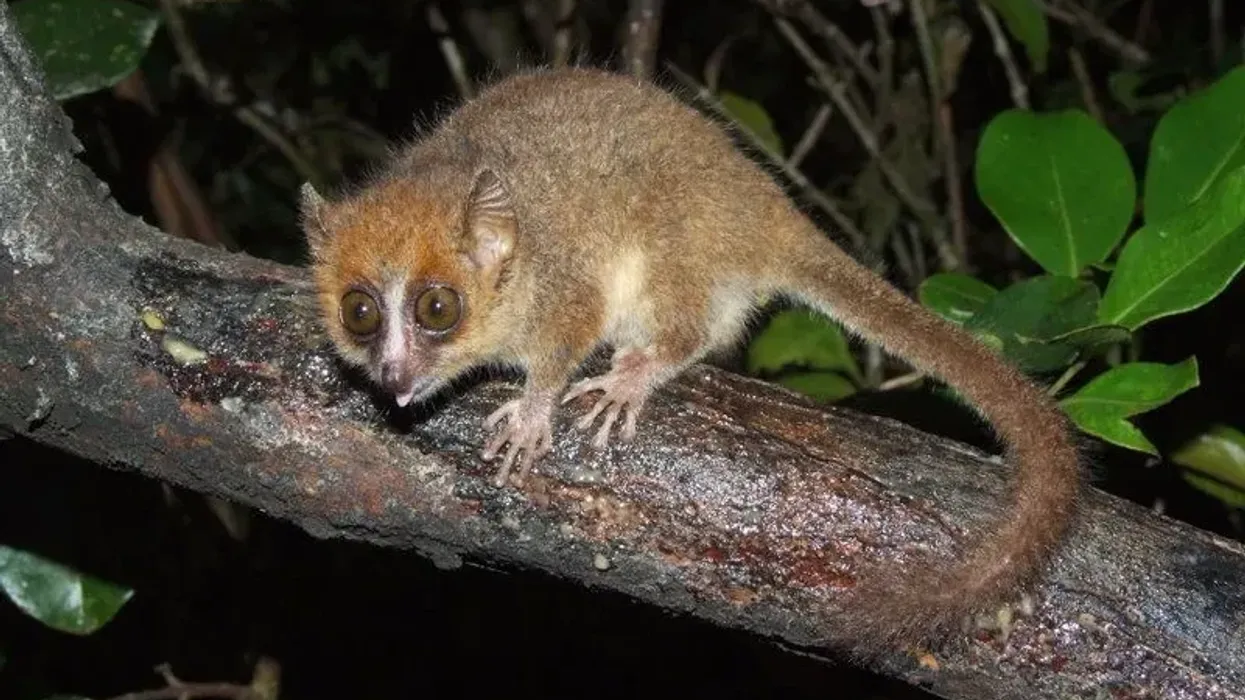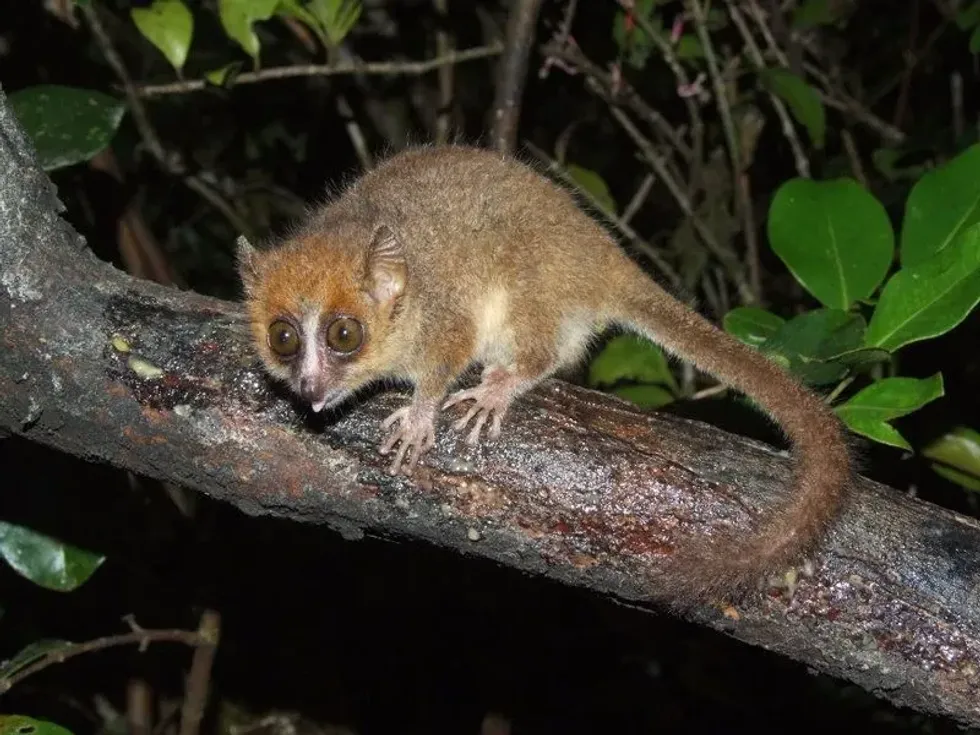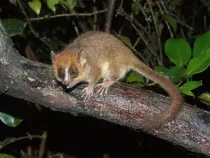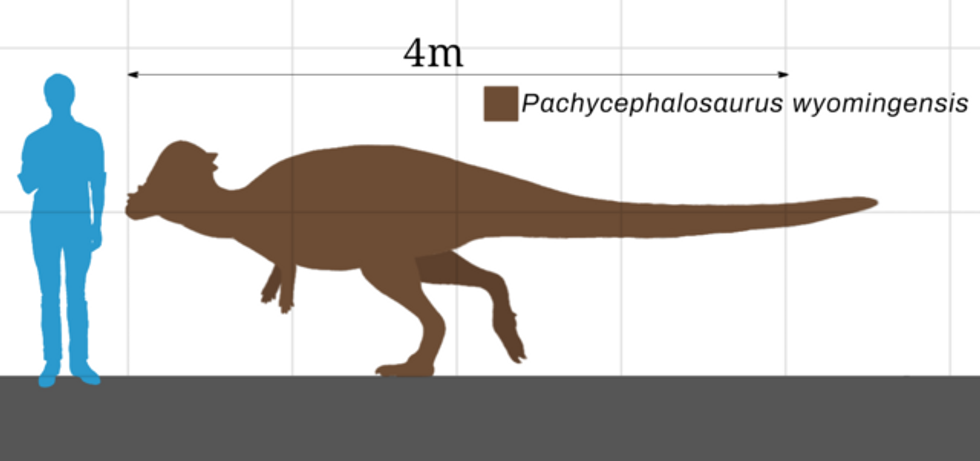Fun Cheirogaleidae Facts For Kids

Cheirogaleidae is a family of closely related primates which consists of mouse lemurs and dwarf lemurs. There are many species under each of the five genera which fall under this family.
The lemurs of these species are some of the smallest lemurs and they are all nocturnal arboreal animals.
They live in similar habitats and are restricted to the rainforest in Madagascar. These lemurs are found in zoos around the world as well, such as the Bronx Zoo in New York City, but they are native to the country of Madagascar.
The Duke University Press continues to release scientific research on lemurs which are quite rare and endangered. Lemurs are quite agile and they have the kind of fur which helps them camouflage in the forests which helps them protect themselves from predators.
Many new species of this family have been recently discovered and newly named so a lot more about them is still getting discovered. There are at least 100 different kinds of lemurs already in existence.
Keep reading for more fascinating facts about the Cheirogaleidae family! If you liked this article with amazing facts about Cheirogaleidae, then also check out the other articles with facts about the leopard seal and fennec fox.
Cheirogaleidae Interesting Facts
What type of animal is a Cheirogaleidae?
Cheirogaleidae is a family of strepsirrhine primates that includes different types of dwarf lemurs and mouse lemurs.
What class of animal does a Cheirogaleidae belong to?
Dwarf lemurs and mouse lemurs of the Cheirogaleidae family belong to the Mammalia class of animals, with their superfamily being Lemuroidea.
How many Cheirogaleidaes are there in the world?
The exact population of dwarf lemurs and mouse lemurs under the family Cheirogaleidae has not yet been recorded because there are many species in this family. Scientists have been able to record the population of a few of these species but the data is deficient regarding most mouse lemurs and dwarf lemurs.
Where does a Cheirogaleidae live?
Animals found under the Cheirogaleidae family such as dwarf and mouse lemurs are only found in forest regions of Madagascar, especially in northwestern Madagascar.
What is a Cheirogaleidae's habitat?
Mouse lemurs and dwarf lemurs are found in forest habitats. They are seen to exist in evergreen forests, deciduous forests, and scrub forests. Some mouse lemur species (which belong to the genus Microcebus) also live in suburban areas and agricultural fields. These mouse lemurs (Cheirogaleidae family mouse lemurs) live in tree hollows or round leaf nests during the day.
Who do Cheirogaleidaes live with?
Cheirogaleidaes are usually solitary animals but they are sometimes found together living in pairs. The social organization of dwarf and mouse lemurs differs from species to species.
Many dwarf and mouse lemurs (Microcebus genus) are found in big groups with males and females living separately. Dwarf and mouse lemurs of the Cheirogaleus genus live in small monogamous families.
However, the different families may get together to defend themselves when they feel their territory is being threatened. These lemurs mostly forage for food alone but come back to live together during the night.
How long does a Cheirogaleidae live?
Captive dwarf lemurs have been seen to live up to 23 years while fork marked lemurs can live up to 25 years in captivity. In the forests of Madagascar, they are preyed upon by rattlesnakes, owls, and fossa who are nocturnal predators.
Researchers have not been able to ascertain the usual lifespan of lemurs that live in the wild and assume it to be much shorter than their lifespan in captivity.
How do they reproduce?
Female dwarf and mouse lemurs of the family Cheirogaleidae can have multiple estrous cycles per year which can be seen by certain changes in their body. Females can mate with several male lemurs and the males use breeding calls to find a mate.
The breeding season for dwarf lemurs and mouse lemurs starts in October and goes on until March. The smaller species often give birth to multiple litters in a year with each litter having between two and three young lemurs.
The gestation period for the female dwarf lemur or mouse lemur lasts for 60 days. The young are nursed by the females throughout the day but are fully weaned after five to six weeks.
What is their conservation status?
There are multiple species identified under the family Cheirogaleidae and each of them is classified distinctly by the International Union for Conservation of Nature (IUCN).
Two species: Microcebus boraha and Groves' dwarf lemur (Cheirogaleus grovesi) are listed under the category of Data Deficient by the IUCN as they have been discovered quite recently and have not yet been extensively studied.
Two species are listed as Least Concern: the grey-brown mouse lemur (Microcebus griseorufus) and the grey mouse lemur (Microcebus murinus).
A total of 18 species are considered to be Endangered: the hairy eared dwarf lemur, the northern giant mouse lemur, the Masoala fork-marked lemur, the pale fork-marked lemur, the Anosy mouse lemur, Thomas' dwarf lemur, MacArthur's mouse lemur, Claire's mouse lemur, the Ankarana dwarf lemur, Coquerel's giant mouse lemur, the Bongolava mouse lemur, Mittermeier's mouse lemur, the Sambirano fork marked lemur, Jolly's mouse lemur, the Lavasoa dwarf lemur, the mountain lemur, Simmons' mouse lemur, and Margot Marsh's lemur.
Four species are considered to be Critically Endangered: Sibree's dwarf lemur, the Bemanasy mouse lemur, the Marohita mouse lemur, Gerp's mouse lemur, and Madame Berthe's mouse lemur.
In addition to that, 11 species have been listed as vulnerable: the northern giant mouse lemur, the Tavaratra mouse lemur, Danfoss' mouse lemur, the fat-tailed dwarf lemur, the rufous mouse lemur, Peters' mouse lemur, Goodman's mouse lemur, Arnhold's mouse lemur, Crossley's dwarf lemur, the golden-brown mouse lemur, and Geoffroy's mouse lemur.
Even the species which are classified as Least Concern are thought to be facing population decline due to a loss of habitat.
Cheirogaleidae Fun Facts
What do Cheirogaleidaes look like?
Mouse lemurs (Cheirogaleidae) and dwarf lemurs (Cheirogaleus major) usually have a gray or brown colored pelage on their front and a light yellow colored pelage on their sides. Some of the species have darker eye rings or stripes on their nose.
Their fur is thick and has a woolly texture. The lemurs found in eastern Madagascar have reddish-brown fur while those in western Madagascar have gray-colored fur.
Dwarf lemurs and mouse lemurs have long tails and large, thin ears. They have huge eyes which are at the front of their faces.
Their eyes have a tapetum lucidum which is a layer that reflects light and helps these nocturnal animals with their night vision. These lemurs have long fingers with rounded tips and a compact, lithe body.
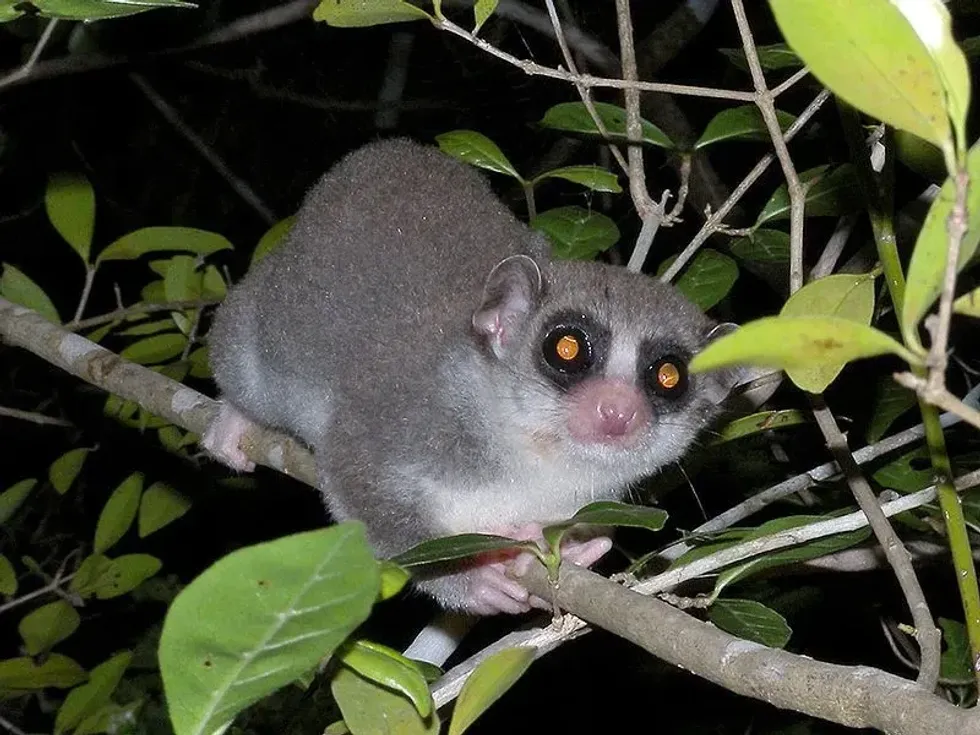
How cute are they?
Lemurs are actually quite cute with their small, furry bodies and huge, round eyes! Due to their cute features, they were even added as characters in the famous Hollywood movie franchise called 'Madagascar'.
Popular actor Sacha Baron Cohen voiced the character of King Julien, a ring-tailed lemur. Ring-tailed lemurs are terrestrial animals but still show arboreal characteristics and are famous for their unique black and white ring-marked long tails.
Cedric the Entertainer was cast as the aye-aye lemur who was the chief advisor of King Julien. A Goodman's mouse lemur known as Mort was also part of the movie and was voiced by Andy Richter.
In addition to that, David P. Smith voiced the characters of Pancho, a crowned lemur, and Becca, a black lemur. The hilarious antics of these lemurs added to the movie and made it very funny.
How do they communicate?
Cheirogaleidae dwarf lemurs and mouse lemurs primarily communicate within their species by using the olfactory medium along with sound. They mark their territory through scent marking and leave urine or gland secretions on trees and branches. They also make high-pitched sounds when they feel threatened or alarmed and need to protect their territory.
How big is a Cheirogaleidae?
The average body length of a lemur from the family of Cheirogaleidae is approximately 4.7-10.6 in (12-27 cm). Pygmy mouse lemurs or Berthe's mouse lemurs (Microcebus berthae) are the smallest primates.
They are quite small compared to ruffed lemurs who are the largest of the Lemuridae family of the lemurs' genus in Madagascar. A tuna fish is almost 10 times the size of a big lemur from the Cheirogaleidae family as it is around 80 in (2 m) in size!
How fast can a Cheirogaleidae run?
The lemur species under Cheirogaleidae are strong climbers and can jump quite far as they use their long tails for balance. They rarely come down on the ground but when they do, they hop around using their hind legs.
They usually leap using two hind legs and walk around using all four legs although it is not known how far or how fast they can run.
How much does a Cheirogaleidae weigh?
A lemur from the family Cheirogaleidae usually weighs between 1.05-16.22 oz (30-460 g).
What are their male and female names of the species?
There are no distinct, unique names for male and female lemurs of the species that fall under the family Cheirogaleidae. Therefore, they are referred to simply as a male lemur or a female lemur.
What would you call a baby Cheirogaleidae?
A baby of the Cheirogaleidae family is usually referred to as a pup.
What do they eat?
Dwarf lemurs and mouse lemurs are omnivorous as they eat fruits, nectar, leaves, insects, and small vertebrates. Lemur species from the Cheirogaleus genus eat fruit while those species from the Phaner genus eat plant gums. They mostly forage on small shrubs and the smaller branches of trees.
Are they poisonous?
Cheirogaleidaes are not poisonous or toxic to human beings.
Would they make a good pet?
Lemurs would not make a good pet at all as they can get quite aggressive if they do not see any other member of their species or family around them. In that case, they may try to establish their dominance over their owners by biting them or grabbing them by lunging at them.
Did you know...
Cheirogaleidaes help in dispersing seeds of the plants that they feed on. In addition to that, they also help in controlling insects and pests through predation.
Lemurs of the Cheirogaleus genus show the habit of aestivation for six months in arid habitats when it is extremely hot and dry. During this time, their bodies go into a state of dormancy or torpor and they do not move about at all.
They also store fat in their tail and hind legs (like the fat-tailed dwarf lemur) during the rainy season to help them in dry times or during their aestivation.
The fossils of a giant lemur (Archaeoindris fontoynontii) have been found in Madagascar that are thought to be from a species that lived almost 26,000 years ago but is now extinct.
The Cheirogaleidae's common name
The Cheirogaleidae family has many mouse lemurs and dwarf lemurs which are known by their scientific and common names. For example, the Microcebus berthae is better known as Berthe's lemur. The Microcebus rufus is better known as the brown mouse lemur.
The scientific name of the fat-tailed dwarf lemur is Cheirogaleus medius. There are four species of fork-crowned lemurs that fall under the genus of Phaner. The most well-known fork-crowned lemur are Masoala fork-crowned lemurs.
The scientific name of the greater dwarf lemur is Cheirogaleus major. The hairy-eared dwarf lemur or the hairy-eared mouse lemur belongs to the genus Allocebus. The furry-eared lemur or Crossley's dwarf lemur has the scientific name Cheirogaleus crossleyi.
Cheirogaleidae teeth
Cheirogaleidae dwarf lemurs and mouse lemurs have a unique kind of jaw, cranial and teeth structure that makes it easy to identify them. These dwarf lemurs and mouse lemurs have a tooth comb made up of incisors and canines that are usually seen in strepsirrhine primates.
Their dental or tooth comb refers to the dental structure of some mammals where the front teeth are arranged in a way that helps in grooming.
The dental formula of the mouse lemurs is 2/2, 1/1, 3/3, and 3/3 which together add up to 36 teeth.
Lemurs of this family have longer upper incisors and there are no grooves (hypocones) on their upper molars. Lemurs from the Phaner species have an enlarged caecum that helps them to forage and eat plant gum.
Here at Kidadl, we have carefully created lots of interesting family-friendly animal facts for everyone to discover! For more relatable content, check out these Cuban solenodon facts and greater bilby facts for kids.
You can even occupy yourself at home by coloring in one of our free printable Cheirogaleidae coloring pages.
We Want Your Photos!
More for You
See All
Bachelor of Arts specializing in Journalism and Mass Communication, Postgraduate Diploma in Sports Management

Moumita DuttaBachelor of Arts specializing in Journalism and Mass Communication, Postgraduate Diploma in Sports Management
A content writer and editor with a passion for sports, Moumita has honed her skills in producing compelling match reports and stories about sporting heroes. She holds a degree in Journalism and Mass Communication from the Indian Institute of Social Welfare and Business Management, Calcutta University, alongside a postgraduate diploma in Sports Management.
Postgraduate Diploma in Management

Sakshi RaturiPostgraduate Diploma in Management
Sakshi has experience in marketing strategy, social media planning, and recruiting industry experts for capstone projects, she has displayed a commitment to enhancing their skills and knowledge. She has won multiple awards, including a Certificate of Appreciation for Creative Writing and a Certificate of Merit for Immaculate Turut, and is always seeking new opportunities to grow and develop.
Disclaimer
1) Kidadl is independent and to make our service free to you the reader we are supported by advertising. We hope you love our recommendations for products and services! What we suggest is selected independently by the Kidadl team. If you purchase using the Buy Now button we may earn a small commission. This does not influence our choices. Prices are correct and items are available at the time the article was published but we cannot guarantee that on the time of reading. Please note that Kidadl is a participant in the Amazon Services LLC Associates Program, an affiliate advertising program designed to provide a means for sites to earn advertising fees by advertising and linking to Amazon. We also link to other websites, but are not responsible for their content.
2) At Kidadl, we strive to recommend the very best activities and events. We will always aim to give you accurate information at the date of publication - however, information does change, so it’s important you do your own research, double-check and make the decision that is right for your family. We recognise that not all activities and ideas are appropriate for all children and families or in all circumstances. Our recommended activities are based on age but these are a guide. We recommend that these ideas are used as inspiration, that ideas are undertaken with appropriate adult supervision, and that each adult uses their own discretion and knowledge of their children to consider the safety and suitability. Kidadl cannot accept liability for the execution of these ideas, and parental supervision is advised at all times, as safety is paramount. Anyone using the information provided by Kidadl does so at their own risk and we can not accept liability if things go wrong.
3) Because we are an educational resource, we have quotes and facts about a range of historical and modern figures. We do not endorse the actions of or rhetoric of all the people included in these collections, but we think they are important for growing minds to learn about under the guidance of parents or guardians.
